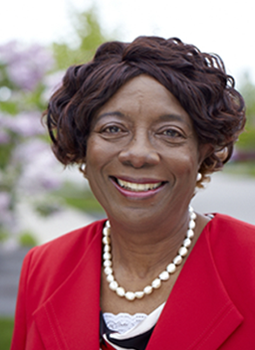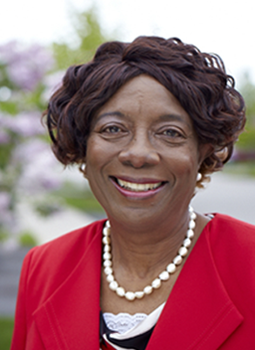One of the privileges of being RNAO president is the chance to connect with members where they work or live. I met enthusiastic groups of RNs, NPs and nursing students during the fall tour, which the CEO and president take part in each year.
My travels took me to two northern cities, Durham Region, and Toronto. My first stop was Timmins, where Jennifer Bertrand, president of RNAO’s Porcupine chapter, greeted me at the airport. She took me to Golden Manor Long-Term Care, where she works as the director of care. A group of RNs at the home were excited to tell me how RNAO’s best practice guidelines have reduced falls in the home and improved the rates of incontinence. Based on the success they’ve experienced, they told me they are interested in becoming a Best Practice Spotlight Organization (BPSO). I saw firsthand how staff members used music and play therapy, arts and crafts, and other activities to improve the quality of life and well-being of residents. I was so impressed with the diligent and compassionate care they are providing.
Later that evening, I toured Timmins and District Hospital, accompanied by three RNAO members. During the tour, I spoke with RNs about their practice, invited them to the chapter meeting, and gave them copies of this Journal as well as our membership brochure. The discussion during the chapter meeting was lively and insightful. We talked about local challenges, such as RN replacement, the opioid epidemic, retaining RNs in home care, and being able to take advantage of RNAO’s webinar offerings through technologies that are accessible in the community.
My next visit was to Sudbury, where I began my day at Health Sciences North with Lorraine Carrington, vice president and chief nursing executive (CNE), an RNAO member and former president of the Durham Northumberland chapter. I learned about how the hospital is employing NPs in its community programs. I also learned about how budget cuts are forcing the hospital to lay off RNs – an issue RNAO continues to oppose.
Following this visit, I met with Sandra Lacle, an active RNAO member who is the director of health promotion and CNE at Sudbury and District Public Health Unit. I learned about the need to improve Indigenous health, addiction services, and to reduce suicide rates among Indigenous youth. She informed me that the health department had developed a joint proposal with the First Nations peoples to strengthen services and programs for them. We also discussed increasing the number of public health placements for nursing students through team preceptoring.
“We talked about local challenges, such as RN replacement, the opioid epidemic, retaining rns in home care, and being able to take advantage of RNAO's webinar offerings.”
My next stop was Laurentian University, where a group of nursing students and professors were waiting for me. Students were inquisitive and were amazed by the benefits of belonging to RNAO. They asked: “Will you encourage high school graduates to choose nursing as a profession?” I answered with a passionate yes, and explained: Nursing is one of the most comprehensive professions, providing a range of career possibilities across different health settings. The students seemed eager to join RNAO and made good use of the membership resources I brought along.
My tour in Sudbury ended at the local Caruso Club for a chapter meeting. I listened to members’ experiences, ideas and concerns. Some of their concerns included: RN layoffs, the cost of attending the AGM, and accessing educational offerings. They suggested RNAO archive its webinars so nurses can access these resources. I reassured them that archived webinars are already available to members online, and that we will continue to make as many offerings available as possible.
My final tour stop was with members of Toronto’s Region 7. Some of the key issues discussed: the long wait times for new graduates to receive their licensure from the College of Nurses of Ontario; employment opportunities for RNs and new grads; support for advocacy in the workplace; RN prescribing; and staffing ratios for RNs and NPs in long-term care. Together, we explored solutions and encouraged unemployed peers to volunteer, which may open doors to future jobs. I also encouraged executive committee members to mentor nursing students by taking part in Queen’s Park on the Road and Take Your MPP to Work visits.
Connecting with members is always energizing and enjoyable. I want to thank you for planning these visits, accompanying me to different sites, and ensuring I left on time to travel back home. I will always remember your kindness and generosity. You make me proud to be an RNAO member.


